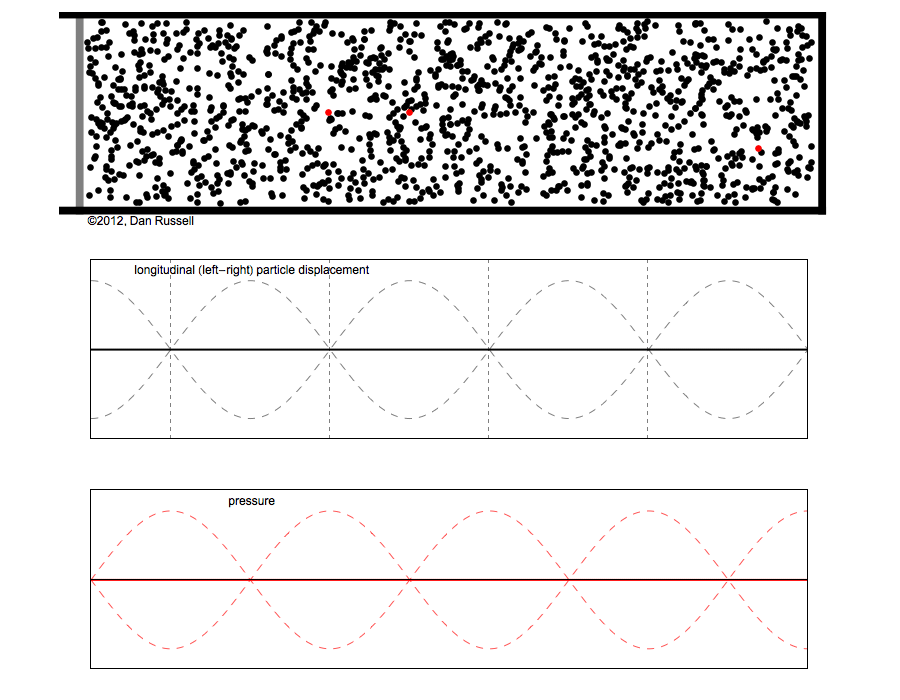I read that the maximum oscilation of air molecules in a sound wave occurs at its nodes. Is this correct? If so, why?
-
2$\begingroup$ Can you be more specific about what you mean by "maximum oscillation"? $\endgroup$– Ashmit DuttaCommented Jun 19, 2022 at 20:44
-
$\begingroup$ Please edit the question to limit it to a specific problem with enough detail to identify an adequate answer. $\endgroup$– Community BotCommented Jun 19, 2022 at 21:24
-
$\begingroup$ it would be where molecules of air have the greatest amplitude in their oscillatory motion. $\endgroup$– Antonio Olinto TonisiCommented Jun 19, 2022 at 21:33
1 Answer
What you are most likely referring to is an acoustic standing wave, and asking whether the air molecule velocity is highest at pressure nodes.
The short answer to this is, yes, the air molecule velocity is highest at the pressure nodes. There are many ways to see why this is so, mathematically, pictorially, etc.
In the picture below (from here) the pressure is the red line, and note that the motion of the air molecules at the pressure antinodes don't really move much.
One way to understand this is to imagine a molecule (eg, the left-most red dot in the top figure) at the pressure antinode (ie, where the peak and minimum pressures occur). To get to the antinode peak pressure, a bunch of molecules race towards it, and to get to the antinode minimum pressure, a bunch of molecules race away, but this one molecule never has to move, it is just at the center of the motion towards and away from the antinode. So if the antinodes have the least motion, where is the most motion? It's at the nodes, where the pressure doesn't change because there are always as many molecules leaving as arriving, but where the molecules are moving the most to move between the oscillating maxima and minima.
-
1$\begingroup$ thank you so much, now I understand this! $\endgroup$ Commented Jun 20, 2022 at 13:37

